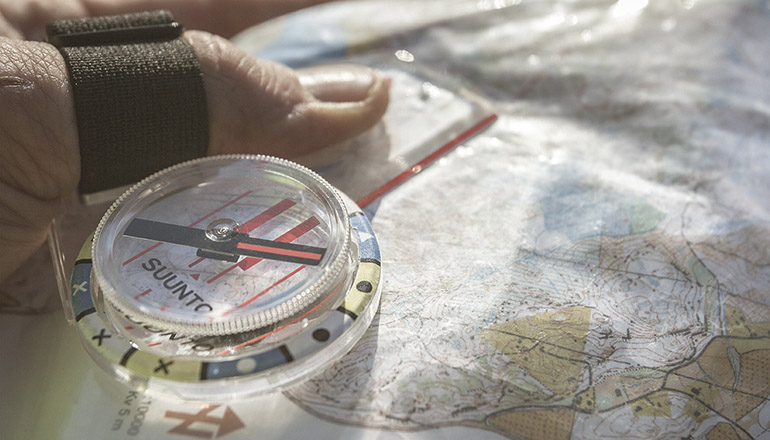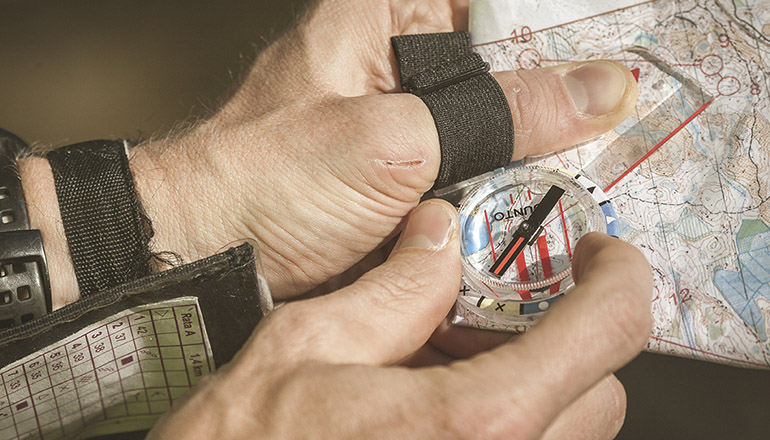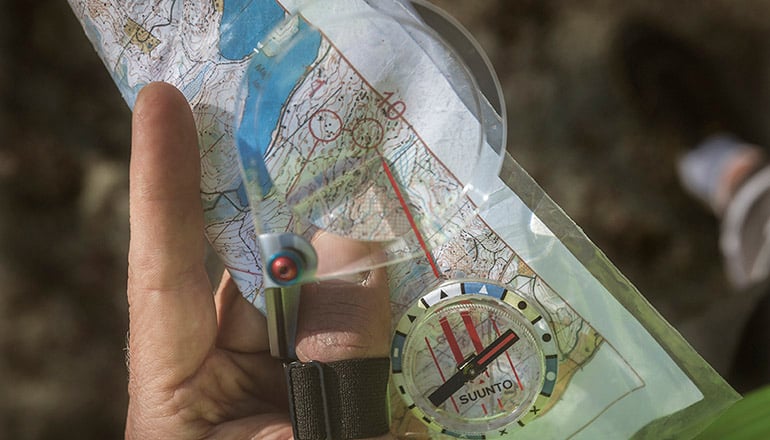Mårten Boström says that the process of developing a new compass was an interesting one. “I have realized how much I as an elite orienteer can give insight to the product development team into how the product is actually used,” Boström says.
The team came up with an innovative design that supports three methods of direction finding. You can easily switch between methods, even during the same event, to match the challenges of your current terrain or the distance to the next control point.
With the AIM compasses it is possible to find and follow the direction in different ways. Which methods do you use and when?

On short legs I simply place the compass on the control leg and turn my body facing the next control to align the map meridians and needle north.

After I have picked a distinguishable object in the terrain to aim for I check which color/symbol -combination the north arrow is pointing to and aim for that same visual combination on every glimpse while proceeding towards the next control.
If I only need a course direction towards a big object (e.g. a lake) I might just use a whole sector in a similar manner.

On long legs I turn the compass capsule so I can see the north arrow fit in the orienting indicator – thus I don't need to keep the compass on top of the map on the rest of the leg.
In all of these I'm of course AIMing into the correct direction where the red arrow on the far end of the compass plate is.
The new Suunto AIM-6 can be used with a magnifying lens. When do you use that?
A loupe (or magnifying lens) is starting to be a popular accessory even for orienteers with good eyesight. There are more and more details on the maps nowadays and the loupe really helps.

Place the loupe in front of the thumb compass so that you can see the corner of the compass baseplate but mainly magnifying the map.
READ MORE
Learn more about the new AIM-6 and AIM-30 compasses